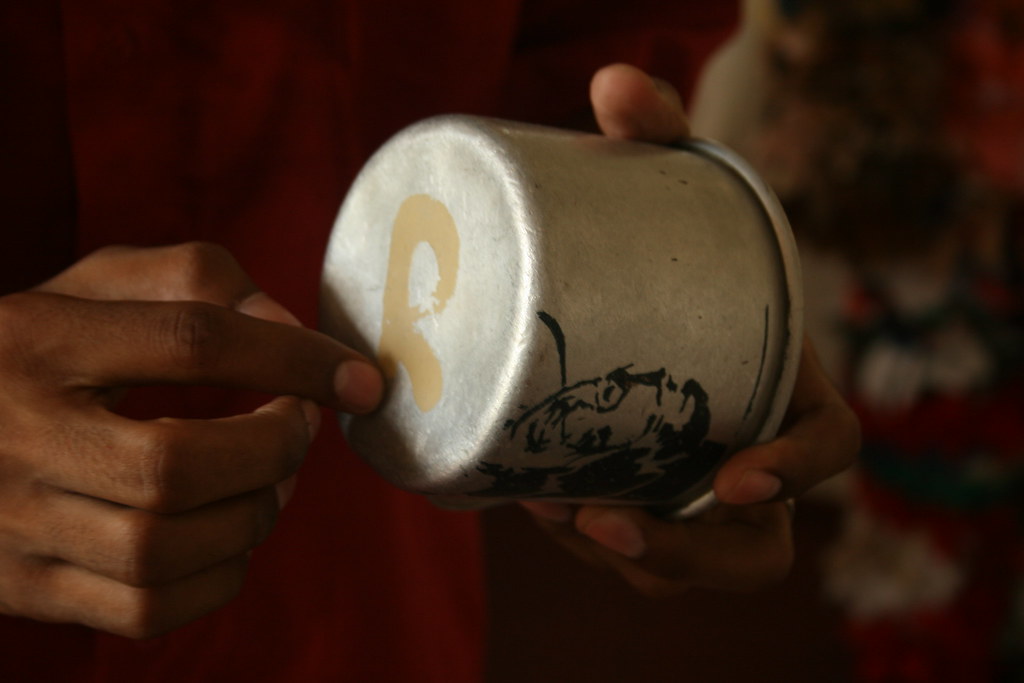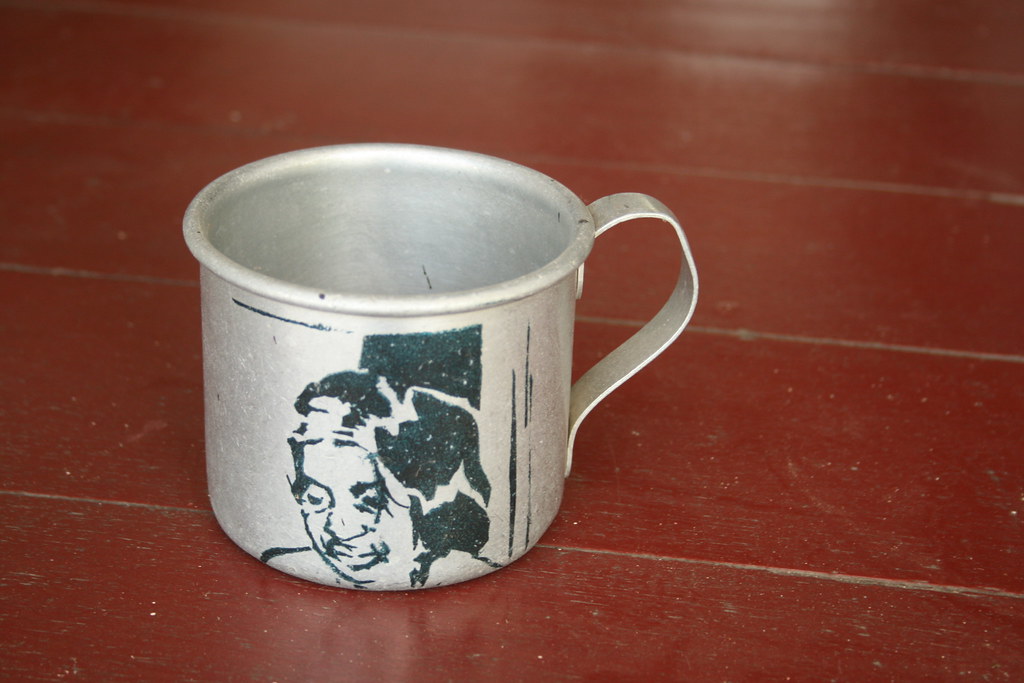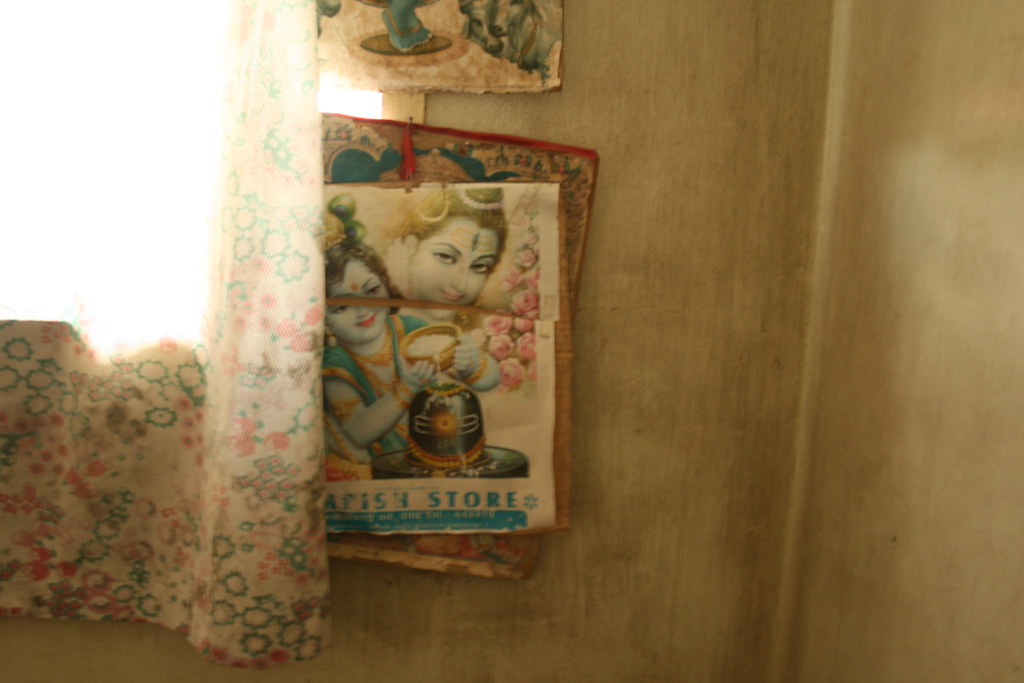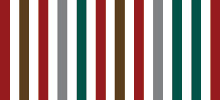By Christopher Cozier
Dhiradj Ramsamoedj holding one of his Adji Gilas cups
September 2009
A few examples of Dhiradj Ramsamoedj’s Adji Gilas cups are placed on the red-oxide-coloured floor of his studio. This is a typical painted floor for a house in Kwatta, west of central Paramaribo, and this looks like a typical cup. We could be in Trinidad or Guyana. He is explaining to me that “adji” means maternal grandmother, and that these aluminium mugs were from her once-active business renting wares for festivities and other events.
Dhiradj points out that the cups still have an “R” written in enamel paint underneath. There are approximately forty of them left. The artist has transferred onto them graphic images derived from early photographs of his grandmother. So this is not just a typical house, or a typical cup: it is Dhiradj’s. We are looking at this work in his grandparents’ home, which has now become his studio or site of investigation. This is a very personal navigation of his experience — his own memory and relationship to family and place.
We are on the inside of his process, and this location is not just a sight to be rendered — not just an image to take to the market, as we see in local art galleries throughout the Caribbean. Most forms of representation in the Caribbean would render the house and the location from a viewpoint across the street, for the touristic or cultural brochures, saying that this is the typical Asian household of this part of the country. It would be a static silenced sign of national diversity or of cultural otherness, accordingly.
But this is Dhiradj’s active site of investigation, of developing personal vocabularies towards sovereign ways of articulating his own lived experiences and stories, from the inside looking out.
I ask him if the work should even leave this site, as the work, the process of minding (caring for) and mining (investigating the symbolic agency of) these intimate elements, this series of actions, resonate within this actual space. They transform the space, which both contains and amplifies their intent. They take on a site-specific implication, and the artist’s actions become differently performative and enabling — not just to me, the viewer, but also to other artists like himself working in places like this everywhere. This is more than just cultural display. This about the artist working his way through what he knows and can understand.
I would like to argue that within this transactional space or moment of exchange we are all transported or altered. So where is Kwatta now within this moment?
Is it in the critical space shaped by his intent, his investigative process, dislodged from narratives of nation, of culture, of cultural display and otherness? Is it an action within the critical space we call the Caribbean, which is just another space where an artist, a creative individual, struggles to understand the world around him- or herself?
After I meet with Dhiradj, he sends me an image by email, in which he arranges the cups — “gilas” — on the internal structural beams of the wooden house, often used as shelves in traditional Caribbean homes. In that single gesture, he weaves together the structural investigations of Remy Jungerman with, of course, Mondrian’s. They are all fair game within his investigative moment.
It is not my intention to create an imbalance, but more to look at the work of Dhiradj as someone whose approach is derived from the current range of influences available to him. This processing and reconfiguring defines the current moment in which many contemporary Surinamese artists are proceeding.
Hindu devotional images in Ramsamoedj's house
Dhiradj Ramsamoedj graduated from the Nola Hatterman Institute in Paramaribo in 2004. His most recent exhibition was Double Feature, together with Kurt Nahar, at the Readytex Art Gallery in August 2009.
Project: Dhiradj Ramsamoedj, Adji Gilas
Sunday, October 18, 2009
Subscribe to:
Post Comments (Atom)






0 comments:
Post a Comment